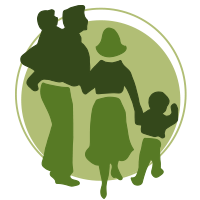Pre-Ski fitness tips:
Don’t just sit there – Exercising through squats, sit ups and cycling is also good to tease the right muscles.
It’s a balancing act – Balance is the single most important factor in skiing. Use a wobble board to improve balance and build up ankle muscles. For a thorough ankle work-out, rocking heel to toe is good for snowboarders and left to right is best for skiers.
Jump around – Use a mini trampoline to work all those ‘skiing’ muscles.
Roll with it – Roller blading is perfect practice and will help you develop a good ski posture, so you look like a pro on the slopes.
Check it out – Most skiers find turning one way easier than the other. Poor technique might not be the problem, so talk to a chiropractor for advice.
Out on the slopes:
Hot and Cold – Warm up before strenuous skiing. Start off gently rather than heading first for the black runs and round the day off with a stretch.
Take plenty of breaks – Overexertion will ruin your holiday – moderate the length of skiing time and listen to your body. Pain is a warning sign, don’t ignore it.
Liquid lunch – Drink plenty of water and isotonic drinks to avoid dehydration and stay clear of alcohol, tea and coffee.
Wrap up – Make sure clothing is warm and adequate for the cold weather and don’t forget hat and gloves.
What a bind – If you are prone to going ‘knock-kneed’ when you ski, look out for lateral alignment. Wedges expertly placed under the binding can make a huge difference.
Carry on – Always be careful when carrying skis/boards. Leave them standing upright so you don’t have to bend to pick them up. Carry them over your shoulder, swapping shoulders regularly.
Ice is nice – With an acute injury, use ice rather than heat.
Tread carefully – A great deal of people are injured by slipping on ice at the ski resort, not just on the slopes. Wear shoes with a deep treaded sole and use strap-on studs for ski boots to help keep you upright.
It still holds true that it is always better to take preventive measures in order to reduce the risks of injuries. Take note of these guidelines to ensure you keep on the ski safe side this ski season.
Courtesy of The British Chiropractic Association



